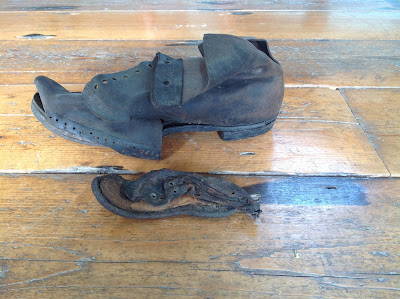The Finnish Famine Exhibition
An Interview with Dr.
Andrew Newby on his current exhibition at The Irish Workhouse Centre
How did this
exhibition come about?
In 2012 I was pleased
to receive an Academy of Finland Award to work on a five year project to compare
the Irish and Finnish famines. This exhibition came out of that project. It travelled
to Ireland to be displayed in The National Famine Museum at Strokestown but
then migrated to the National University of Ireland, Galway. Just when I
thought the exhibition had to return to Finland, I was delighted when the opportunity
arose for it to be displayed at The Irish Workhouse Centre.
How did you get
involved in researching the Finnish Famine?
I first heard about
the Finnish Famine in 1997 from a Finnish Student. Being Irish and specifically
a Mayo man, the topic of famine struck a chord with me. The fact that 1997 was
the anniversary of Black ‘47 meant that famine research was already on the
radar.
I visited Finland in
’98 and discovered a very different response to famine in terms of national
identity. This fascinated me. The Finnish Famine is not widely talked about,
and is seen as bringing the nation together; a high point of solidarity where there
was no crime and everyone worked together. It was at such odds to discussions
surrounding the Irish famine.
 |
| Contemporary photograph from the Finnish Famine |
How come there is
such a big difference in how the Finnish Famine is viewed?
The big factor is that
they had Home Rule. There was no outside party to blame. Nature was held as
entirely at fault, with a harsh frost bringing about the widespread damage to
crops. It was held to be a blameless disaster. Even the mismanagement of relief
is still not publicly acknowledged.
Another factor is that
the Finnish population recovered quite quickly after their famine, and mass
transatlantic emigration did not happen.
Who is the exhibition
aimed at?
My hope is that
someone with not a clue of Irish or Finnish history could walk in off the
street and enjoy this exhibition. At the same time, because of the new research
and rarely seen images, a seasoned historian would really enjoy it as well.
What is your
favourite object in the exhibition?
 |
| Bark from the Scots Pine and traditional bark bread |
What would you like people to take away from this exhibition?
For me, the exhibition
in a nutshell is that even though there are big national differences between
both famines, the experience on a local level was very similar. Finnish mass
graves look remarkably and poignantly similar to ones in Ireland. They also had
this idea that you had to work for aid. You can visit Finland and see famine
roads! This tells me that it is easy to lose sight of individual experiences
when researching national catastrophes. There are facts and figures which tell
us ‘the big picture’ but the suffering of everyday people is the true story.
The reality of starvation is just as horrifying, whether you’re in Ireland or
Finland.
Elizabeth Carter
 |
| Illustration from a Swedish newspaper in 1867 depicting the effects of starvation in Sweden's Northern provinces, and showing how universal the imagery of famine can be |
Elizabeth Carter


Great exhibition, well worth a visit to view some of the images of utter wretchedness, hunger, distress, disease and starvation. I like that the exhibition is about the people of Finland.
ReplyDeleteCongratulations well done.
Thank you so much! We are very lucky to have exhibitions of such a high calibre come to Portumna.
Delete